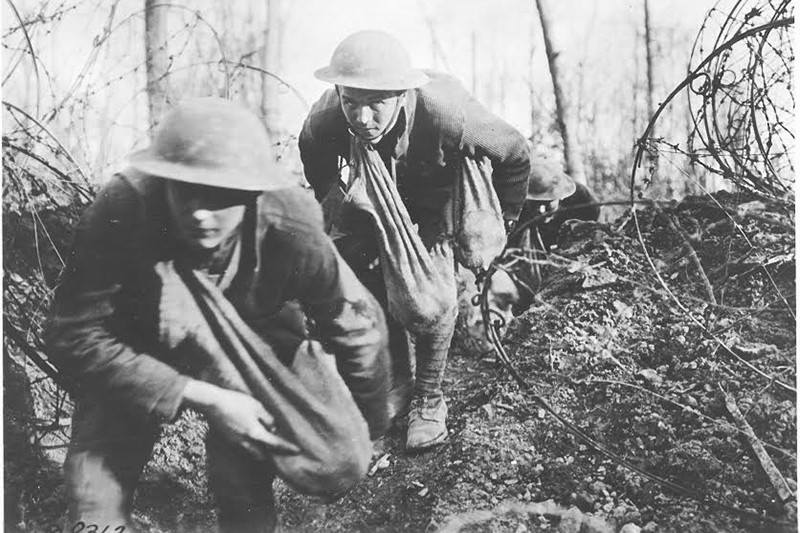“RAIDING PARTIES” ON THE WESTERN FRONT

Raiding Parties during WWI. Many people who read about World War I, the Great War, are aware of trench warfare and the many stories of how the massive battles were fought, generally frontal assaults charging against defensive machine guns and devastating artillery bombardments. However, few folks realize there was a much more personal and deadly type of fighting on the Western Front: the raiding party.
All along the Western Front both sides, allied and the enemy, sent small bands of specially trained soldiers to probe the other’s barbed wire looking for weak spots, and also to actually penetrate the enemy’s trench and take prisoners for interrogation.
As for the Americans, the leaders of these raiding parties would have received special training from the British or French in trench knives and bayonets. One of these specialized warriors was my grandfather, Lt. Paul Jarrett of the 42nd “Rainbow” Division.
After five weeks of special training with the British near the Belgian border, Paul was sent back to train the soldiers of Company M, 166th Infantry Regiment—approximately 200 men. When the general ordered the capture of German soldiers for interrogation and information, Lt. Jarrett would select what he considered the best men who could handle the only two weapons that they would have in No Man’s Land: a special trench knife and a Colt. .45 pistol.

[Above: This is the type of trench knife that Lt. Jarrett and his men carried on their special missions. Nicknamed “Jarrett’s Belly Button Gang,” they carried this deadly weapon: Fifteen inches in length, with pointed brass knuckles on the hand guard and a three-edged hardened blue steel blade, it was delivered to the lower abdomen to create a puncture wound that would be hard to sew up.]
After dark, the selected soldiers would meet in the officer’s dugout in the front-line trench, trade in their rifles for these two hand-to-hand weapons, and receive a quick briefing, before engineers would cut a hole in their own barbed-wire.
Once in No Man’s Land this band of 15-20 men would be on high alert for similar German raiding parties probing the same area. On many occasions a small fire-fight ensued when they happened to meet out in the pitch dark of No Man’s Land, with both parties returning to their respective trenches without obtaining information or prisoners.

A typical view of No Man’s Land: Barren and void of any vegetation or life. Raiding parties would crawl all night long to attack the enemy trenches to take prisoners for interrogation purposes.
[To be continued…Part II: Raiding Parties]
